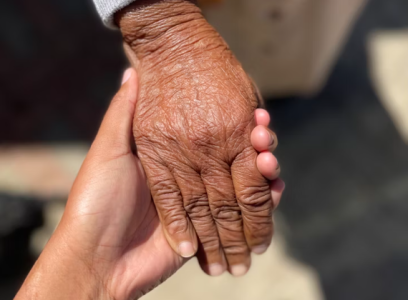Medicaid rules on paying family caregivers may surprise you
- Replies 0
Many people step into a role they never expected, quietly taking on the responsibility of caring for someone they love.
This commitment can require countless hours each week, balancing personal life and work while ensuring a relative’s needs are met.
Questions about compensation often arise as the duties grow heavier and more demanding. Understanding how support systems work can make a significant difference for families in this position.
Across the United States, about 63 million people serve as family caregivers, helping with essential activities such as bathing, dressing, cooking, and shopping.
Medicaid recognizes this effort and offers programs that allow family members to be paid for providing such care.
However, each state sets its own rules on eligibility, payment rates, and even which relatives can qualify for compensation. That means what one caregiver earns in one state could look very different in another.
On average, home health and personal care aides earn around $17 per hour, but Medicaid caregiver pay varies widely depending on factors like location, cost of living, level of care required, and the program used.
Some states allow payments through their Medicaid state plan, while others rely on waiver programs designed to keep people out of nursing homes.
Structured family caregiving programs, for instance, may require the caregiver to live with the person they are supporting. These differences highlight how complex and state-specific the system can be.
Recent data shows that certain states offer much higher pay rates for caregivers than others, particularly in areas with a high cost of living.
According to Care.com, the following states provide some of the highest average hourly rates for in-home caregivers, although actual Medicaid pay may differ:
Also read: Caregiver burnout is real—here’s how to recognize the signs and protect your well-being
This change is expected to bring more transparency to a system where rates are often hidden due to bundled services and managed care structures.
While this may not eliminate the variation between states, it should help families understand what compensation they can realistically expect. Clearer data may also influence state budgets and future caregiver support policies.
Eligibility for Medicaid caregiver pay generally requires that the person receiving care is enrolled in Medicaid and needs help with activities of daily living.
Also read: A caregiving crisis is growing across the US—here’s what families need to know now
The caregiver must usually enroll as a provider, complete training, and sometimes pass background checks.
Some states exclude certain relatives, such as spouses or parents of minor children, from being paid, while others allow more flexibility.
With programs often capped by funding limits, applicants may also face waiting lists, particularly for waiver-based services.
Read next: You don’t have to be there to show you care: A senior’s guide to long-distance caregiving

Would you consider becoming a paid caregiver for a loved one if your state offered a fair wage? Do you think Medicaid should do more to ensure consistency across the country? Share your thoughts in the comments below and join the conversation.
This commitment can require countless hours each week, balancing personal life and work while ensuring a relative’s needs are met.
Questions about compensation often arise as the duties grow heavier and more demanding. Understanding how support systems work can make a significant difference for families in this position.
Across the United States, about 63 million people serve as family caregivers, helping with essential activities such as bathing, dressing, cooking, and shopping.
Medicaid recognizes this effort and offers programs that allow family members to be paid for providing such care.
However, each state sets its own rules on eligibility, payment rates, and even which relatives can qualify for compensation. That means what one caregiver earns in one state could look very different in another.
On average, home health and personal care aides earn around $17 per hour, but Medicaid caregiver pay varies widely depending on factors like location, cost of living, level of care required, and the program used.
Some states allow payments through their Medicaid state plan, while others rely on waiver programs designed to keep people out of nursing homes.
Structured family caregiving programs, for instance, may require the caregiver to live with the person they are supporting. These differences highlight how complex and state-specific the system can be.
Recent data shows that certain states offer much higher pay rates for caregivers than others, particularly in areas with a high cost of living.
According to Care.com, the following states provide some of the highest average hourly rates for in-home caregivers, although actual Medicaid pay may differ:
Also read: Caregiver burnout is real—here’s how to recognize the signs and protect your well-being
- Washington: $26.09 per hour
- Alaska: $25.31 per hour
- California: $24.89 per hour
- Maine: $24.67 per hour
- Massachusetts: $24.59 per hour
- Oregon: $24.56 per hour
- Colorado: $24.54 per hour
- Hawaii: $24.31 per hour
- Minnesota: $24.26 per hour
- New York: $24.25 per hour
This change is expected to bring more transparency to a system where rates are often hidden due to bundled services and managed care structures.
While this may not eliminate the variation between states, it should help families understand what compensation they can realistically expect. Clearer data may also influence state budgets and future caregiver support policies.
Eligibility for Medicaid caregiver pay generally requires that the person receiving care is enrolled in Medicaid and needs help with activities of daily living.
Also read: A caregiving crisis is growing across the US—here’s what families need to know now
The caregiver must usually enroll as a provider, complete training, and sometimes pass background checks.
Some states exclude certain relatives, such as spouses or parents of minor children, from being paid, while others allow more flexibility.
With programs often capped by funding limits, applicants may also face waiting lists, particularly for waiver-based services.
Read next: You don’t have to be there to show you care: A senior’s guide to long-distance caregiving
Key Takeaways
- Family caregiving in the US involves millions of people, with many shouldering daily responsibilities that impact both their lives and livelihoods.
- Medicaid provides ways for family caregivers to be compensated, but the rules and pay rates vary dramatically by state and program.
- Some states pay well above the national average for in-home care, especially in high-cost regions.
- With new transparency requirements beginning in 2026, families should soon gain clearer insights into how much support Medicaid can offer for caregiving.







